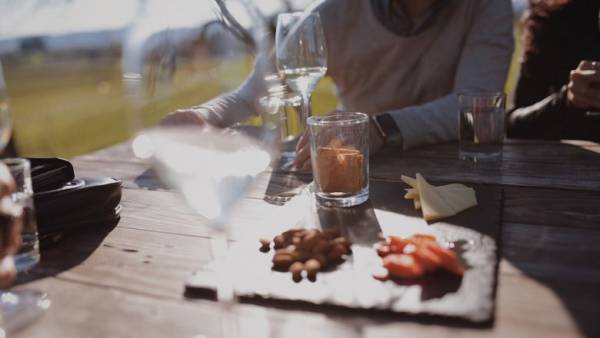Food from the same plate has helped people faster to negotiate
Those who ate nachos from the same plate, quickly come to an agreement.
Upstairs
American scientists have found that sharing food from a common tray enhances cooperation among people. To do this, they conducted two experiments, during which the strangers had come to an agreement during the meal: the appetizers were either shared or separate each. It turned out that eating from a common dish makes people (even strangers) faster to come to an agreement. The article is forthcoming in the journal Psychological Science, with Preprint available on the website of the University of Chicago.
Joint food intake largely depends on the cultural characteristics of the companies involved. For example, Indian and Chinese traditions quite often eating, laying food from the common plates, as in France often eat separately.
Eating from the same plate requires cooperation: each participant of the meal needs to worry not only about what to eat yourself, but about eating enough rest.
Caitlin Woolley (Kaitlin Woolley) from Cornell University and Alet Fischbach (Ayelet Fishbach) from the University of Chicago suggested that increased cooperation with the division of food for a meal can improve, and cooperation on other issues: for example, if during a joint lunch is the business meeting. To do this, they conducted three experiments.
In the first experiment was attended by 200 students, which were divided into pairs so that a pair of people were not familiar with each other. Volunteers were seated at a table and offered them Mexican starters — nachos and salsa: half of the couples had a plate of appetizers each, and the second half pairs — one common bowl of sauce and chips. During the meal, participants were given the task to negotiate the hourly rate for employees during a strike: choose amount in the range from 10 to 11 dollars. While one participant had to vote for the demotion (he was represented by managers) and the other for higher (this participant was represented by a Union). To say the participants could not (offer recorded on paper and were shown to another participant), and they just came in if the proposal was equal or if the proposal “the Manager” exceeded the proposal of “Union” (in this case, salary was calculated based on an average between two suggested amounts). If agreement was not reached to 22 rate, the salary was established at the suggestion of “Manager”. In addition, each subsequent attempt to negotiate resulted in financial losses for the enterprise: both sides, so it was more profitable not only to get the best salary, but also to negotiate as soon as possible.
Scientists have found that eating from the same plate helped participants to negotiate faster: on average, to reach an agreement, they spent five times less than those who ate from their own plates.
Increased cooperation also enabled them to reduce losses: a hypothetical enterprise, the fate of wage workers which was decided by the participants, who ate from the same plate, lost 1.5 million dollars less.
In the second experiment, was attended by 104 people, who needed to solve a variation of the “prisoner’s dilemma”. Each person of the pair represented his airline, which it was necessary to set prices for air travel, but their decisions depended on the profit. There were two options (the standard price for the ticket and the discounted price), the choice of each price plan has resulted in different profit: for example, in the case that one company will choose a price discount, and the second standard, the first to get seven million of profit, and the second — only three. The choice of the standard plan prices each company led to profits equal to five million: the share choosing this plan, the researchers used as the primary factor of cooperation. All the participants had to make 20 negotiations at the end of each of which one participant knew which plan you chose another, and could change its decision accordingly. The quality of food the participants were offered either a single pack with crackers-fish for two, or one small bag each.
After analyzing the results of the second experiment, the scientists found that the division of food between participants increasing choice standard plan for 20.4% (which increases cooperation between the two parties).
Finally, in the third experiment, the researchers decided to examine how the division of food affects cooperation between strangers on the one hand and between friends. To do this, they repeated the first experiment with the participation of 240 people, divided into pairs: the participants of one half of the pairs were strangers to each other, and the other participants were good friends. As snacks to the participants again offered crackers.
As in the first experiment, the food from the same plate increased cooperation: those who ate from the same plate, spent on the establishment of salaries for three rounds less. In addition, a couple of friends who eat crackers from the same plate, spent on one round less than the strangers who were eating from the same plate.
The authors came to the conclusion that cooperation is necessary in order to eat food from the same plate, influences cooperation in other issues that could be discussed during the meal. And it works not only for friends, between them and so there is a high level of agreement, but also to strangers.